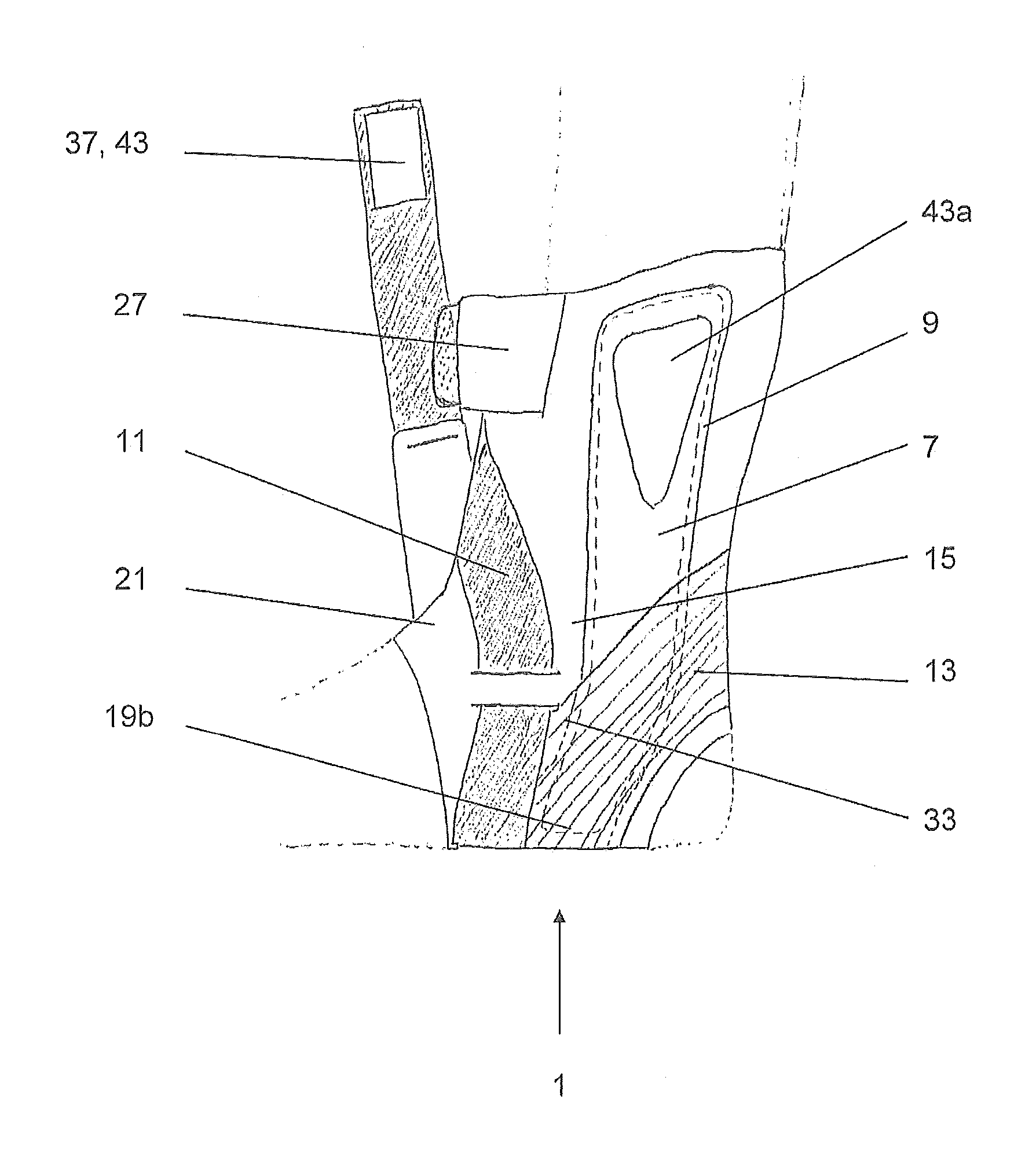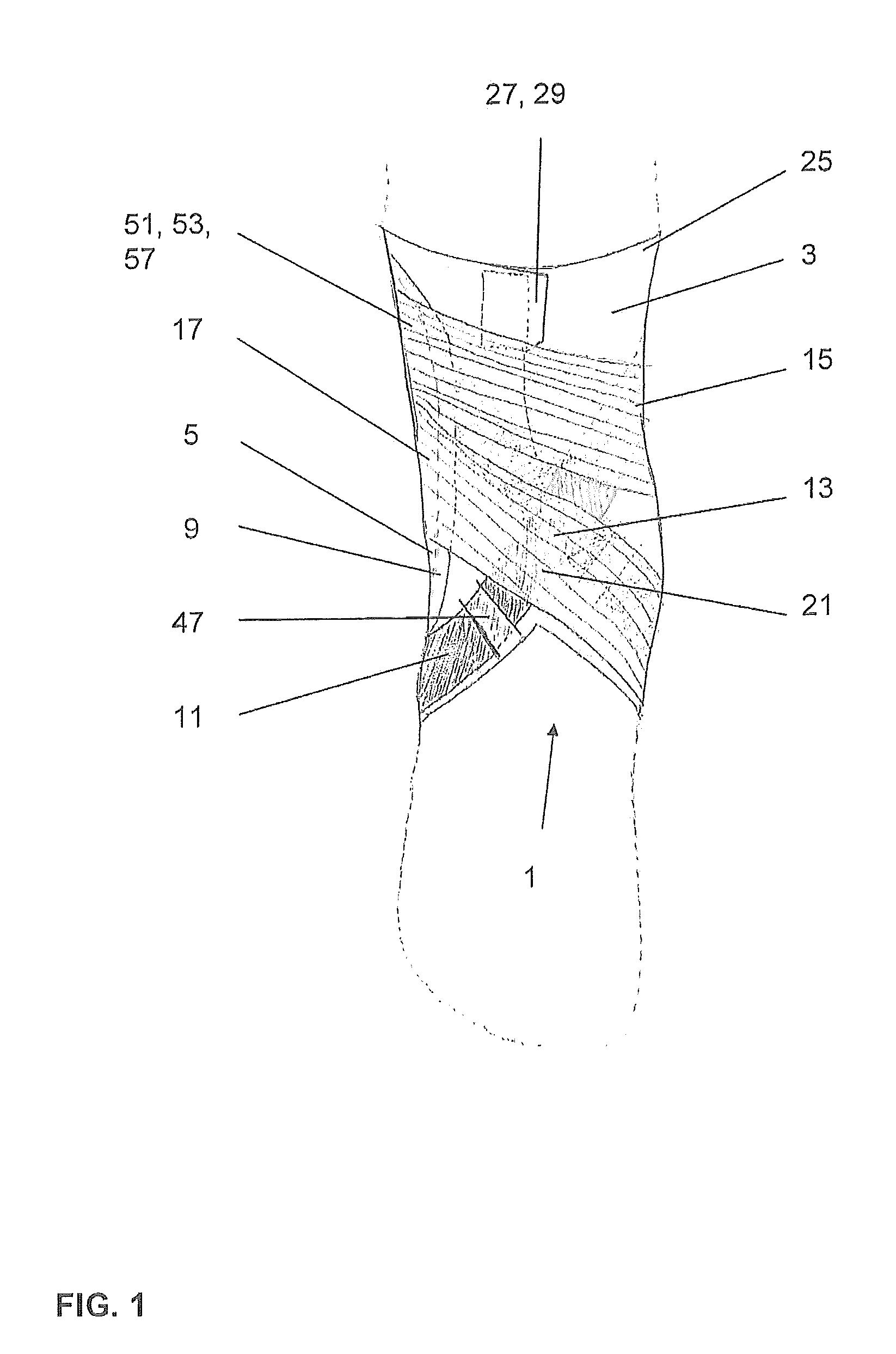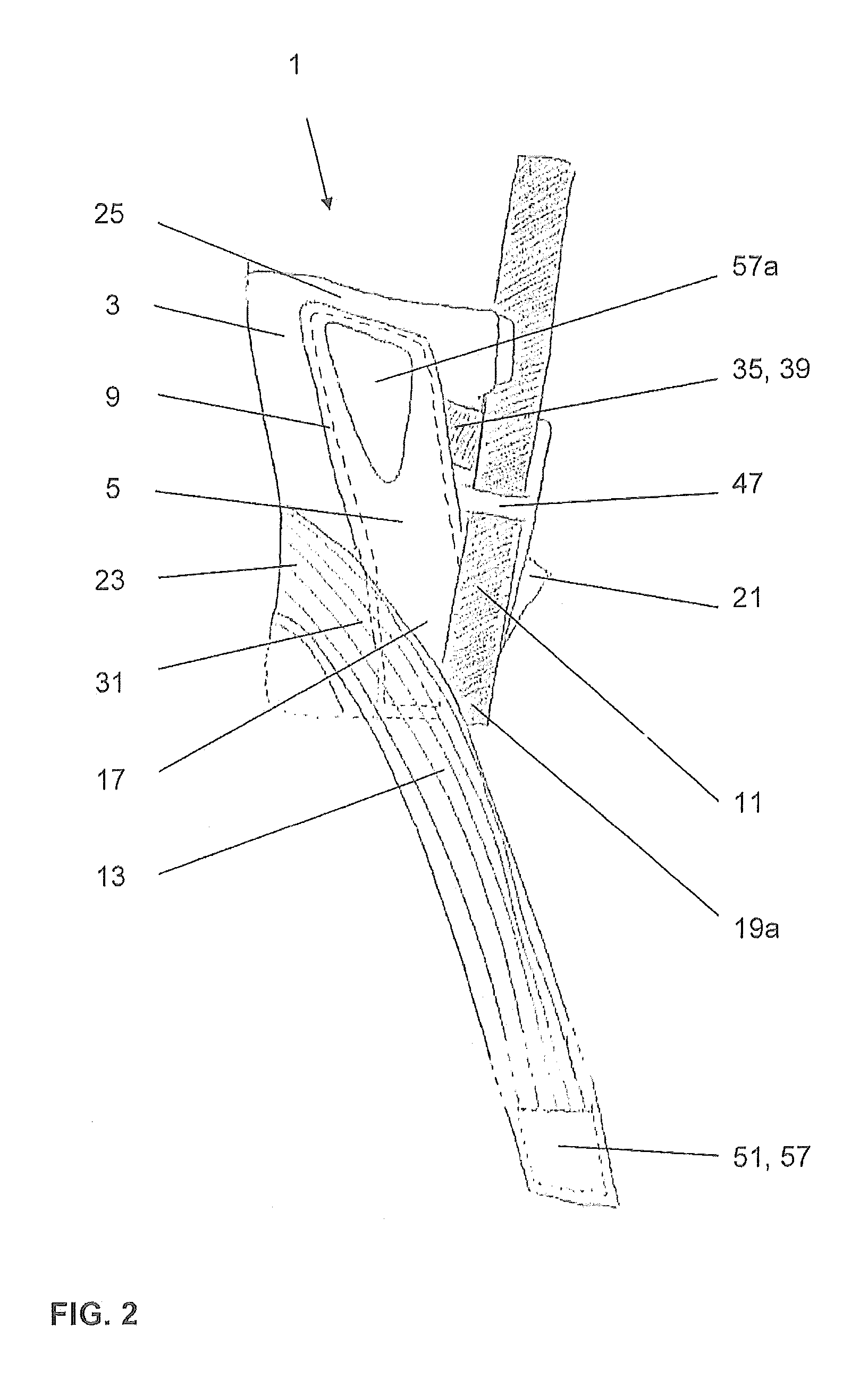Ankle support
a technology for supporting the ankles and supporting the knees, which is applied in the field of ankle braces, can solve the problems of inability to permanently set the precise degree of pronation or supination, the connection is therefore inconvenient to guide, and the connection at both ends of the fixing belt has proved to be disadvantageous, so as to facilitate the guide of the compression belt
- Summary
- Abstract
- Description
- Claims
- Application Information
AI Technical Summary
Benefits of technology
Problems solved by technology
Method used
Image
Examples
Embodiment Construction
[0047]FIG. 1 shows an exemplary embodiment of an ankle brace 1 according to the invention that can be used in the present case to adjust the pronation of an ankle that it surrounds. The ankle brace 1 comprises a main body 3, a lateral and medial splint element 5, 7, an applied reinforcement 9, a fixing belt 11, and a compression belt 13.
[0048]The main body 3 is formed from a flexible material to surround, i.e., closely lie against a human leg in the area of the ankle joint from the lower leg to the midfoot. The main body 3 has a medial section 15 (see FIG. 3), a lateral section 17 (see FIG. 2), a sole section 19 (see FIG. 5) with a lateral and medial side 19a, 19b, an arch and instep section 21 (see FIGS. 1 and 6), and a posterior section 23 (see FIG. 4). The sections can be formed together as a single piece, or the main body 3 can have sections that are, for example, sewn together.
[0049]The medial section 15 is provided to contact the medial side, the lateral section 17 is provided...
PUM
 Login to View More
Login to View More Abstract
Description
Claims
Application Information
 Login to View More
Login to View More - R&D
- Intellectual Property
- Life Sciences
- Materials
- Tech Scout
- Unparalleled Data Quality
- Higher Quality Content
- 60% Fewer Hallucinations
Browse by: Latest US Patents, China's latest patents, Technical Efficacy Thesaurus, Application Domain, Technology Topic, Popular Technical Reports.
© 2025 PatSnap. All rights reserved.Legal|Privacy policy|Modern Slavery Act Transparency Statement|Sitemap|About US| Contact US: help@patsnap.com



